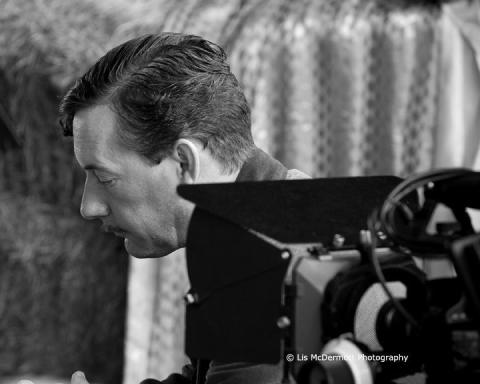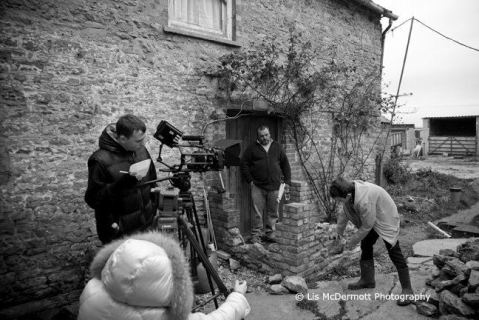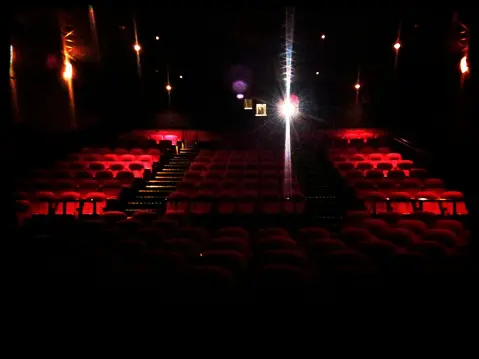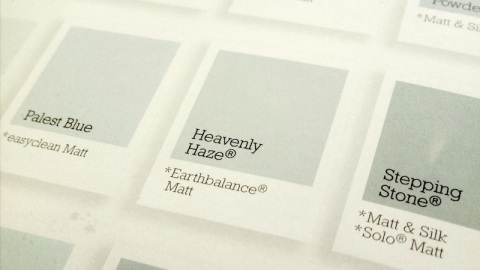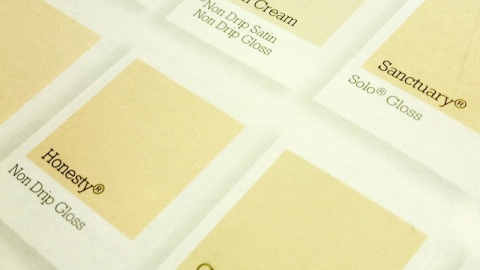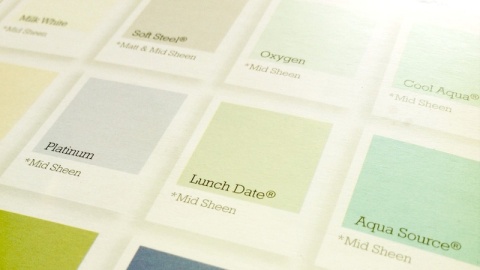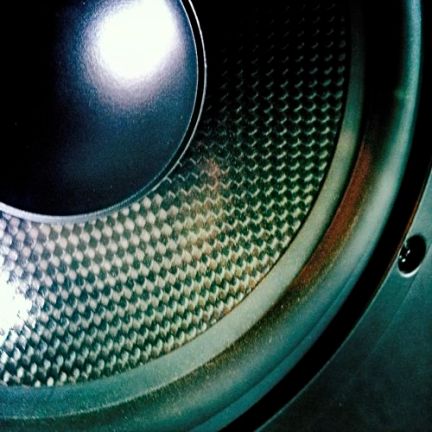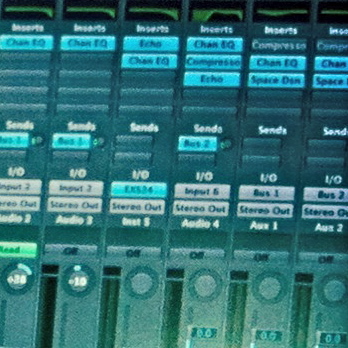‘Mr Wiggles’ – the sound process of a short film
June 7, 2013
Type in Mr Wiggles to Google and what do you get? A load of entries for the rap artist Mr Wiggles. However the penultimate entry on page one of Google – last time I looked – refers to another Mr Wiggles. This is far more interesting – to me at any rate.
Mr Wiggles is a Swindon-based short film, written and directed by Steve Ware and co-directed by Steph Palmer. In late 2011 Steve asked me if I’d be able to spare some time over a couple of weekends to record the location sound for the film and to act as sound supervisor on the project. As with all ‘no/lo-budget’ projects I was naturally skeptical, so I asked Steve for a draft script so I could read what it was all about. First read and I was hooked by this powerful family drama and simply had to be involved.
I went to recce the location with Steve and Steph a month or so before filming so I could get my bearings on the situation – this being a large run-down farmhouse on the side of an A-road and an accompanying large barn, open at the sides. My immediate impression was the sound of the road nearby. As a sound recordist I’m always thinking about the final product when making decisions on sound. Thinking about what I can get away with in terms of dialogue and how I can perhaps ‘cover’ up the sound of passing traffic if need be, especially for the exterior barn shots. Lot’s of close-up shots come in handy here, where I can get the boom in a close as possible to maximise the signal (dialogue) to noise (passing traffic) ratio.
During the recce I made some atmos and room tone recordings which I could later use in the film. I also recorded the sounds of the farm animals as I expected to be using some of these during the post production process. After all, the sound of a snorting pig pitched down can be quite dramatic!! I also ended up banging and hitting various farm implements, including a large rusty spring on the back of a grass cutter, which was later pitched and used in the trailer for effect.
Main shooting of the film took place over two consecutive weekends in November 2011. The first weekend turned out to be very cold with near or sub-zero temperatures for most of the time due to to a constant wind entering the open side of the barn we were filming in. Lots of layers, hats, balaclavas, scarves and gloves were required, as well as plenty of hot drinks! As sound recordist I was ably assisted on boom by Samantha and 2nd sound assistant, Shannon to record notes for each take. We were lucky to have such a comprehensive crew on this film, whose unyielding efforts really contributed to the quality of the final product.
The second weekend’s shooting was a little easier as many more of the shots were in the house so less effected by traffic noise and a lot warmer too!
Following a very intense but ultimately successful shoot we were now into post production. Initially I had offered to compose the music for the film, as well as doing the sound design, edit and mix. This initially seemed like a good idea and my first composition was some original music for a music box which is featured heavily in the film. Steve was keen that we have an original score for this which I duly delivered. The main music score was a different proposition and I was feeling under pressure to deliver as well as keeping my regular paying clients happy. Fortunately around this time I was introduced to composer Michelle Eaton through a mutual friend. I was immediately impressed by her compositions and asked if she might like to get involved in the film. She said yes! I’d been messing about with a couple of ideas, which basically consisted of a series of nine notes!! A catchy riff but very far from a proper film score. I played these to Michelle and a week later she had transformed my initial idea into something wonderful and immediately engaging. A few tweaks later and we had a main score for the film. From this Michelle composed a series of moods to go with the unfolding of the film.
The last music track in the film was written and performed by Daniella Faircloth and Matthew Mordak. I recorded and mixed the music at Dreambase Studios and a music video was later created for the song at the film’s location.
At this time the picture edit was more or less complete so I was editing/processing the dialogue and adding fx and atmospheres to the soundtrack. I’d already completed a short teaser trailer for the film with some temp music, which was later changed using Michelle’s score. Michelle’s music was the last element to be laid up to the main project and this is pretty usual for most films. Ideally the composer would be bought onto a project at pre-production stage but logistically this doesn’t always happen. The music was track-layed using Michelle’s notes and with some further editing and mixing we were approaching a theatrical mix which could be played back in the local multiplex for the premiere. We had a couple of evening sessions at the studio with the core team to go through the soundtrack and get approval before it was mastered out and married with the graded picture, ready for the first showing. When the crew actually have tears in their eyes in the studio you know you’ve done a god job; emotions were running high – in a good way!!
Next event was the screening in the local multiplex cinema. I had mixed the film knowing it was going to be re-played in this environment so was pretty confident everything would be played back at the right level and all the dialogue would be understood. The sold-out charity premiere was a superb night and marked the end of the first stage of the film’s progress.
Mr Wiggles has so far been shown on the festival circuit in Asia and is currently showing in America. I wish it all the very best, especially given the hard work, commitment and attention to detail from everyone involved.
You can keep updated on Mr Wiggles via the Facebook page here.
Mr Wiggles is about the imaginative distraction we all desperately desire from reality. The film takes the lives of two young children’s desperate escape, into a world created for protection. But for Amber and Nathan, it’s only a matter of time before reality, catches up.
Lacking songwriting inspiration? Read a paint chart.
March 11, 2013
I’m renovating the house at the moment, so the place is littered with all manner of related detritus: brochures, drawings, B&Q receipts. And paint charts.
I also write songs, and inspiration comes from a variety of sources: people, events, people, the news, people, the weather – OK, mostly people!
My songwriting technique often revolves around a guitar or piano riff and a bit of interplay with another guitar, or bass line. I then mumble along a rough melody to the hook and the words start forming from there. Usually this might be mixed with some phrases I’ve read in a book or newspaper; or perhaps something I’ve overheard or remembered from a conversation, meeting or other event.
I’m rarely stuck for ideas (luckily), but the other evening I was looking at paint charts – like you do – and to my surprise they were full of potential lyrics and ideas for songs.
I thought the Crown charts above were quite mainstream but the Farrow & Ball paint charts I also looked at would perhaps be more use for folk songs, with names like: Blackened, Lamp Room Gray, Pigeon, Cinder Rose, Borrowed Light, Litchen, Railings and Arsenic to name a few.
So from now on if I ever need a little inspiration to complete a song, the first place I’ll turn to is a Farrow & Ball or Crown paint chart – depending on the style of music, of course…
Adam loudspeakers: why I like them
June 15, 2012
Just realised my goal of a blog-a-month has passed, with May being non-existant in terms of content. June is well and truly here (you’d never know it from the skies) so I thought I’d bang something brief together about the speakers I use.
Loudspeakers are always an emotive subject. Audiophiles, mixers, musicians: they all have their own favourites. And will fight to the verbal death to defend the make and model which floats their own auditory canal. Speakers are like cars – not just because they are potential pub talk – but because we get to know speakers (much like cars). We understand the frequency response (driving characteristics?), we appreciate the look (the curve of the bonnet?), we know how hard to push them (handling?), and we know what they excel at best (city car or load lugger?).
I’ve listened to a fair few speakers in my time (here’s a small selection):
- Those ‘no-brand’ biege ones you used to get with IBM computers: OK if you turned up the treble, right?
- Tannoy Westminsters in my local music recording studio: lovely, big and warm sounding.
- The Yamaha NS10‘s in the same studio – OMG, what’s that flat sound?
- Home made hi-fi boxes with 2-way Morel drivers: I thought they were amazing, but then I did build them….
- Shermann Audio touring arrays: use 2 for my bands PA – they are very crispy.
- Huge 3-way JBL screen arrays in cinemas: close to a hifi sound from a horn loaded enclosure.
The last speakers mentioned are probably those I’ve listened to most from my thirteen years as a sound consultant at Dolby Laboratories, setting up cinemas and film mixing theatres all over the world. I’m referring to horn-loaded systems in general, not just the JBL brand: Martin Audio, Altec, KCS, etc. Horn-loaded HF systems have been used in cinema playback systems for many years, and the smooth response in the 2kHz and upwards range always impressed me, especially in the latest systems. During my time at Dolby I also setup studios with dome tweeters and I could never get the smooth response I really desired and had heard in the cinema.
That is until I came across Adam loudspeakers. I first demo’d the A7’s at a studio in Denmark. I was immediately taken by the smoothness in the the all important upper frequencies of the dialogue spectrum – this was what I’d been looking for and they seemed to closely resemble the response of the best horn-loaded cinema speaker systems. And all this from a near-field speaker with a very small footprint – with ‘foot’ being the operative word!
I started using the A7’s when I set up my own sound studio, quickly moving onto a complete 5.1 setup of Adam’s. I did experiments between the studio and local cinema in order to best set up the speakers in their environment from both a level and equalisation stand point. The first feature film mix I did on them bore out the capabilities of these speakers. The dialogue I’d mixed in my small studio translated beautifully into the cinema environment with little ‘pre-emphasis’. This is important as I didn’t want to have to over or under-do anything in my own studio in order to have good playback in the cinema environment. I needed my small studio to be faithful to a larger cinema space and it’s systems.
Apart from careful setup of the speakers, a big contributor to the success of these units are the ribbon tweeters. They appear to come as close as possible to the horn-loaded systems found in cinemas, making film mixing a thing of confidence, even in a smaller room.
And their capabilities don’t stop there. At Dreambase Studios we don’t just do cinema mixes: we also mix audio for DVD, broadcast and the web. In each of these areas it’s vital to know what levels you need to be monitoring at to get the best delivery. The Adams certainly make that task a lot easier. You are given a head start on frequency and transient response so you only have to worry about the monitoring levels before you start creating for your chosen delivery medium.
In fact the Adams are so detailed, they playback every little click and pop that might be missed on traditional dome tweeter systems – this allows for a thorough and effective ‘technical’ cleanup of audio, as well as a creative one.

So there, I’ve evangelised about some speakers. I’m so used to these speakers now I wouldn’t consider any other make when it comes to near or mid-field monitoring. In a professional production environment you want speakers to help you both creatively and technically. To this end, the Adams come as close to providing both of these requirements in equal measure as any speakers I’ve listened to.
Long may they continue and make my job just that little bit easier!
The opinions expressed in this blog are solely those of the author and do not represent official policy or endorsement of any of the products mentioned.
Kleenex turn guitar luthiers
April 1, 2012
Maker of soft tissue products Kleenex has announced it is to expand it’s worldwide operation to include the manufacture of electric guitars. Kleenex was started in 1924, and has been at the forefront of tissue manufacture ever since. It’s product line offers the full range of hygiene products, from facial cleansers and makeup removers through to the classic Kleenex ‘Mansize’ tissues, and the ever useful ‘Pocket Packs’ of tissues for when you are out and about.
Despite it’s dominance in the tissue market, Kleenex have never been a company to rest on any laurels: ‘We’d gotten to a point in the company’s history where we were thinking about new product offerings’, admits product development director, David Balm. ‘We are continually updating our tissue lines with new and more exciting ranges, but something was missing from us as a brand. Guitars, like tissues have always been so useful to mankind and we thought, hey lets look into this!’. Wind two months on, and Kleenex have shown their first guitar offering at well known music store, Fever Pitch in Arizona. With a sharply designed body in piano black lacquer, complete with shiny chrome hardware, the Ultra O guitar certainly looks the business. But how does it play? Well, five mins with this axe and I was smitten. Attack and sustain is exactly what you’d expect from a high end guitar. Playability is second to none and the action had been setup superbly by new recruit and in-house guitar guru, Dusty Schneeser.
One thing that struck me was the weight of the guitar – it didn’t weigh much at all! I asked Dusty to comment on the guitars construction and he revealed that the body and neck (basically the whole guitar) is made from compressed cardboard and tissue paper. ‘We have a lot of by-product from tissue manufacture and the associated cartons and packaging. We’ve developed a custom forming process to take the tissue, cardboard and a special acoustic glue, and compress them using enormous amounts of pressure. The composite is then cut and fashioned into the shapes that make up the guitar from body to neck and head. The fret-board is made from Rosewood, however. We are delighted with the result and are now looking for celebrity players around the world to help us market the guitar’.
So expect to see the Kleenex guitar at a music shop near you sometime soon.
Music for ‘Lisa’s Story: On My Sleeve’ documentary
January 3, 2012
I recently completed some music compositions and a sound mix for Stephanie Palmer’s documentary about asthma sufferer Lisa and the steps she’s taken to cope with the condition. Called ‘Lisa’s Story: On My Sleeve’, the documentary was made as part of a series of films for Asthma UK and Big Up Your Chest TV to highlight the condition and how it affects the lives of those who suffer with asthma.
The guitar pieces for the film were intended to be simple and light-hearted but also to have a thoughtful tone and feel. This was designed to convey the subject matter and Lisa in the best possible way, and to complement Stephanie’s editing style. The edit audio from Final Cut was remixed and treated to reduce the large amounts of location interference from pedestrians and other building-related sounds. Extra ambience was added to add emphasis to the different locations in the film.
The film can be seen here:
Creeping up on a Welsh Terrier
December 27, 2011
Christmas day has come and gone, Shrek 3(!) is on the telly (this version has a particularly irritating script), and I realise there is no post ready for December. So instead of a lengthy bit of writing or observation I thought I’d post a video of me creeping up on my Welsh Terrier Dog. Now he was pretty nonplussed with the whole 30 seconds, or however long the video took to record. Typical of the breed – playing it cool as always and pretending to be not the least bit interested in iPhone plus owner hovering low over the bed to greet him. I’ve added a few minor 7th-y chords on the acoustic for some light-hearted drama. Whether that has been accomplished is up to you…
Happy New Year Y’all!
Logo Ident Sound for Wootton Bassett Rocks Charity Music Video
November 28, 2011
This is the ident I made for the just-released ‘Wootton Bassett Rocks! Wake Me Up When September Ends’ video, now showing on You Tube: http://youtu.be/NCvQa3cX0Cc
It was designed to go with the logo graphics designed by Lime Park Studios and animated by Rendermedia. The sound is a composite created by playing both the start riff notes and the solo notes at the same time, taken from the ‘Wake Me Up when September Ends” song. The guitar riff was played on my trusty Epiphone ’56 Gold Top with Fender Brownface amp setup, and was overdubbed 4 times and processed with a stereo flanger, multi-tap reverse roll delay, along with a medium reverb. Guitars are accompanied by some sizzling and plane sound effects.
The official music video can be downloaded on iTunes: http://bit.ly/vhnwdO.
Copyright © 2011 Hudd Sounds.
Theme Music for Hoverchase 4D
November 9, 2011
This is the theme I composed in Logic Studio as part of the overall sound design Mark and I did at Dreambase Studios for a theme park ride called Hoverchase 4D. It’s a breakbeat style intended to keep the pace of the ride from beginning to end, and to complement the speed of the visuals and the multilayered sound effects in the ride.
Hoverchase 4D was produced by Lightworx Media and is distributed by The Juice. The trailer can be seen here.
Using Logic for Post Production Sound
October 30, 2011
I was interviewed recently by my industry peer, Ian Palmer regarding my use of Logic in Post Production Sound. The article originally published in the excellent Designing Sound can be read here and is also extracted below under a Creative commons Licence:
‘Dreambase is the result of Alex and Mark’s (two ex-Dolby employees) desire to setup their own post-production sound facility and work in the more creative side of the film industry. Dreambase is located in the former GWR radio studios with two edit rooms and a VO Booth/ Foley Room between the two rooms.
I visited there last year simply to say hello and was surprised to learn that they were editing and mixing feature films using Logic. Inspired by the recent Mix article I thought I would write this article to find out why they are using the DAW instead of the industry standard Pro Tools.
Ian Palmer: You’re a relatively new studio. What made you choose the Apple/Logic platform?
Alex Hudd: Initially it was for cost reasons. I had used Pro Tools since 2000 for music recording but as a Mac user was aware of what Logic was capable of, and the extensive tools it possessed out of the box. The software is so intuitive and the audio library browser is well integrated with the package that track-lays for sound design and composition are very quick to rough out and start working on. Of course Logic’s strength is the ability to compose and this had also been very useful in some projects that I have composed music for. The recording take management in Logic is excellent for ADR sessions as it’s very easy to find the best lines from multiple takes, compare them and bounce out to a composite.
IP: What have been the advantages of such a decision?
AH: We saved money on the initial start-up costs which for a studio can be quite considerable, especially as we had overheads like rent to pay each month.
IP: Have there been any drawbacks?
AH: Lack of compatibility with studios running Pro Tools exclusively is a drawback but the projects we have worked on have been mostly ‘in-house’. At the end of the day we can bounce out any number of stems to take to another studio and import into their own systems but not being able to pass over automation or plug-ins is a disadvantage time- wise.
Editing is not as quick as with Pro Tools as Logic doesn’t posses the equivalent of a ‘Smart Tool’. Also the I/O setup is pretty basic so complex bus routing is not as easy as it is in Pro Tools. We use both Logic 9 and Pro Tools 9 at the studios depending on the project we are working on. And with OMF/AAF interchange it’s easy to exchange files between the two systems.
IP: What hardware are you using?
AH: We use an RME Fireface 800 as the main I/O which is used with Logic and Pro Tools, plus a Rosendahl Synchroniser. We use the Euphonix Artist Series as hardware controller with has excellent integration with both Logic and Pro Tools.
IP: Have you ever worked with another studio and used OMF exchange files?
AH: Yes, we have had OMFs from other facilities and been able to import into Logic with no problems. We have also exchanged Logic projects with other studios running the same software. For example, they might have track-layed and premixed in Logic and then passed the project to us for a final surround mix. It makes for a very quick turnaround.
IP: Pro Tools has AudioSuite to apply changes to audio files quickly without having to setup channels routing and re-recording in real time. How does Bounce-in-Place compare?
AH: Bounce In Place is fine but you have to be organised to make sure you keep track of the tracks! I would love to see an AudioSuite equivalent in Logic (a bit like Soundtrack Pro), however you can do a lot of basic processing such as gain and pitch shift by using the Sample Editor in Logic and applying the processing from there. But beware, you canʼt apply processing to multitrack sound files from within the Logic Sample Editor. Soundtrack Pro has this one covered but it would be nice to see this in Logic now.
IP: You run a Mac Pro without any additional processing hardware. How has the software/ hardware combination performed? This is especially interesting for your feature film work. How does the system hold up running so many tracks and plugins?
AH: We run an 8-core Mac Pro and the performance has been excellent so far. Occasionally you get unexpected crashes, much like you do with Pro Tools but it’s incredibly rare. On a recent feature film we used Logic for Dialogue Edit, ADR, Foley, Sound Design and Final mix, and it handled everything beautifully whilst maintaining good sync between the video and audio. In the final mix we had Dynamics and EQ on most channels along with bus sends to several different Space Designer 5.1 reverbs and it worked very well. Merging separate dialogue, music and effects projects for the premix and final is very straightforward too.
IP: How much in depth automation control do you get with Logic and the MC Artist control surfaces? It uses the EuCon protocol, how does that compare to ProTools?
AH: You can automate pretty much everything in Logic from plug-in and surround panning parameters to mute and bypass. The usual Write, Latch and Touch and Read modes are all available. It doesn’t have a Touch/Latch combo mode as Pro Tools, which can be especially useful for small setups where you want certain parameters to latch such as plug-in automation where it might not be easy to keep your hand on the controls and others to touch such as the fader level. Manual editing of automation parameters is also very easy, which is incredibly useful for very complex sound moves in action and animation projects.
IP: How useful is Audio Quantizing for dialogue and ADR editing?
AH: The Audio Quantization Engine in Logic is excellent, especially for syncing alternative dialogue takes on scenes. In the last film we did with Logic one of the scenes had some prop noise during the shoot so it was decided to wild-track the dialogue from the scene whilst it was still fresh in the actors mind. The scene was probably around 3-4 minutes I think, which is a long time! Using the Flex Time tools in Logic, syncing the dialogue syllables and nuances was much quicker and ultimately more accurate than cutting and cross-fading. For ADR it means that even a close-up can be re-voiced with great accuracy.
IP: Do you use any other 3rd party audio software such as SoundMiner or izotopeRX? If so how well do they interface into Logic and your workflow?
AH: I have the PPMulator meters for the broadcast work we’ve done, but apart from that I tend to use the stock plug-ins. I work in quite a traditional way I guess, so rather than purchasing the latest ‘do-all-analogue-warmth-celebrity-mixer-transformation’ plugins, I tend to use multiple processing to get the effect that I’m after, understanding the physics of sound more than just pushing a magic button. In Logic you can easily save channel strip settings so I have a whole variety of channel strip setups to get rid of Red Camera noise, telephone a voice or bus compress the dialogue, for example.
IP: I’ve heard good things about Space Designer as a convolution reverb, how does it perform for film mixing and the requirement of realism?
AH: Space Designer is excellent and has plenty of surround-ready presets out of the box which you can EQ and process as necessary to get the environment you’re after. You can also record impulse responses from locations and to put those into SD for the ultimate in realism! As we all know though what you hear on location and what you hear in the studio can be different so I would expect a little tweaking to take place before we arrive at the realism (or non-realism!) that we are after.
IP: How well do the plugins that come with Logic perform in relation to post sound? Have you bought any additional 3rd party plugins?
AH: the standard plug-ins in Logic are very comprehensive. My favorites are the Match EQ which will take a reference response of a piece of dialogue for example, then apply that EQ characteristic to another piece of dialogue in order to match the overall spectral response of the original. This is great for matching boom and radio mics or for matching ‘boom-over’ and ‘boom- under’ recordings in a film. The Expander is also great for reducing background noise, and this, coupled with the narrow notches on the standard EQ are very effective at removing unwanted interference from cameras or lighting, whilst maintaining the quality of the dialogue.’
END OF ARTICLE.
If you use Logic for Post Production Sound do get in touch to share your own experiences.
Sound Design for ‘Hover Chase 4D’ ride
October 20, 2011
At Dreambase Studios Mark Kenna and I have just completed sound design on what is probably one of the most exciting experiences to come out this year. Produced by Lightworx Media and distributed by The Juice, Hover Chase 4D is an attraction ride experience that takes you on a hover bike race through city streets, oil refineries, forests, and caves. Participants in the ride not only experience 3D picture and 5.1 sound, but are also treated to moving seats, wind, smell, and water effects, amongst others.
The challenge for the soundtrack was to create a believable and powerful sound for the hover bike. You experience the ride from the point of view of one of the racers and so the sound of the hover bike had to react to every twist and turn during the 5 minute ride. The rise and fall of the engine was designed to compliment the speed and direction of the hover bike. In addition to this the other bikes in the race had to be sounded and directed as they moved on the screen in such a was as you really feel part of the action and excitement, not to mention the flyby’s, battles and explosions. Mark and I worked together over several weeks to create and mix the sound design for the attraction.
The atmospheres of each of the locations in the race were designed also to bring a sense of being there for the ride’s participants. I composed the underlying music score to help keep the pace of the ride throughout so that from start to finish the experience is one that you’ll never forget and one that you’ll want to come back for more.
The ride is now available for licensing from The Juice.


